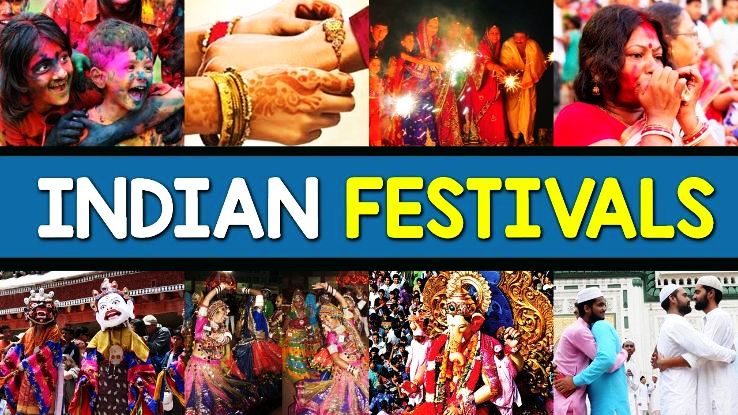What is Chhath Puja? What is chhath puja in English
Chhath Puja is an ancient festival celebrated on the sixth day after Diwali. Chhath Puja is also known as Surya Chhath or Dala Chhath. Chhath Puja is celebrated in different metros of the country including Bihar, Jharkhand, Eastern Uttar Pradesh, Madhya Pradesh, Chhattisgarh. Although people bow to the rising sun, but Chhath Puja is such a unique festival that begins with the worship of the setting sun. The word "Chhath" comes from the abbreviation "Sashti", which means "six", hence the festival is celebrated on the sixth day of the ascending phase of the moon, on the bright half of the month of Kartik. Starting from the Chaturthi of the month of Kartik and celebrated till Saptami, this festival continues for four days. The main puja is performed on the sixth day of Shukla Paksha of Kartik month.
date and time
This year, Chhath Puja will start on 11th November 2018 (Sunday) and will continue till 14th November 2018 (Wednesday). The main puja will be celebrated on 13th November 2021 (Tuesday).
Shastri Date 13 November 2021 (Tuesday)
Beginning : 1:50 am
14 November 2018 (Wednesday) End : 4:22 am
Main Pooja 13 November 2021
Beginning : 6:41 am
Sunset : 5:28 pm
Chhath Puja is being organized on a large scale at the Art of Living International Centre, Bangalore in the august presence of His Holiness Gurudev Sri Sri Ravi Shankar. All you devotees living in Bangalore city are cordially invited here on this auspicious occasion.
First Arghya on 13th from 5:30 PM to 6:30 PM. After that satsang with Gurudev. Second Arghya on 14th from 6 am to 7 pm. After that Prasad distribution.
Contact details for specific information:
Binay Kumar Singh - 9999999999
Ranjit Kumar - 9999999999
the applicant
All Art of Living family.
Importance of Chhath Puja
The fast of Chhath Puja is associated for the happiness and prosperity of the family and the family. The main purpose of this fast is to wish for the health of all the family members including husband, wife, son, grandson. The practice of Chhath also provides mental peace. Regular pranic flow of air during Chhath helps in reducing anger, jealousy and other negative emotions.
There are many famous folk festivals of sun worship in our country which are celebrated in different provinces with different customs. In many other foreign islands including Mauritius, Trinidad, Sumatra, Java, people of Indian origin also celebrate Chhath festival with great faith and pomp.
“This festival is a day to show gratitude to the sun. Sun is an integral part of our life. Sun is the basis of our existence. In this it is necessary to offer Arghya to the sun, that is, looking at the sun, and this can be done only in the morning or evening. Now the question arises, for how long do we need to see the sun? You hold water in your hands and the water slowly drains out of the fingers, till then the sun is seen. Looking at the sun provides energy to your body. Therefore, the puja is mainly performed to express gratitude to the sun.
Message of Gurudev Sri Sri Ravi Shankar
History of Chhath Puja | Story of Chhath Puja | Chhath Puja story behind it in English | Story of Chhath Puja in English
It is believed that the celebration of Chhath Puja is clearly mentioned in the ancient Vedas, as the rituals performed during the puja are similar to those described in the Rigveda, in which the Sun is worshipped. At that time, the rishis were also known to worship the sun and get their energy directly from the sun without consuming good food.
It is said that following the advice of the great sage Dhaumya during the Mahabharata period, Draupadi resorted to Chhath Puja to relieve the Pandavas from hardship. Through this ritual, she was able to solve not only immediate problems, but later, the Pandavas regained their kingdom in Hastinapur (present day Delhi). It is said that Karna, the son of Surya (Suraj), who fought against the Pandavas in the great battle of Kurukshetra, also performed Chhath rituals. Another importance of worship is also attached to the story of Lord Rama. According to ancient texts, Rama and his wife Sita had fasted and prayed to the Sun God in the month of Kartika in the Shukla Paksha after 14 years of exile. Since then, Chhath Puja has become an important and traditional Hindu festival, which is celebrated with enthusiasm every year.
There is also a popular belief that worshiping the Sun God also eliminates diseases like leprosy and ensures longevity and prosperity of the family. It is done with strict discipline, purity and highest respect. And once a family starts Chhat Puja, it becomes their duty to pass on the traditions to the generations.
chhath puja festival
1. Day 1
On the first day of Chhath Puja, Kartik Shukla Chaturthi is celebrated as 'Nahay-Khay'. First of all the house is cleaned and made holy. After this, Chhathvati starts the fast by taking a holy bath and taking “pure vegetarian food” prepared in a holy manner. All the members of the house take food only after fasting. Pumpkin, gram dal and rice are taken as food. On this day, devotees take a dip in the Koshi, Karnali and Ganga rivers, and take this holy water home to prepare the offerings.
2. Day 2
On the second day of Kartik "Shukla Panchami fasting for the whole day after fasting" eats food in the evening, it is called 'Kharna'. 'Kharna' offering











